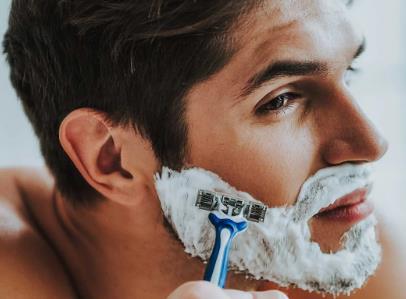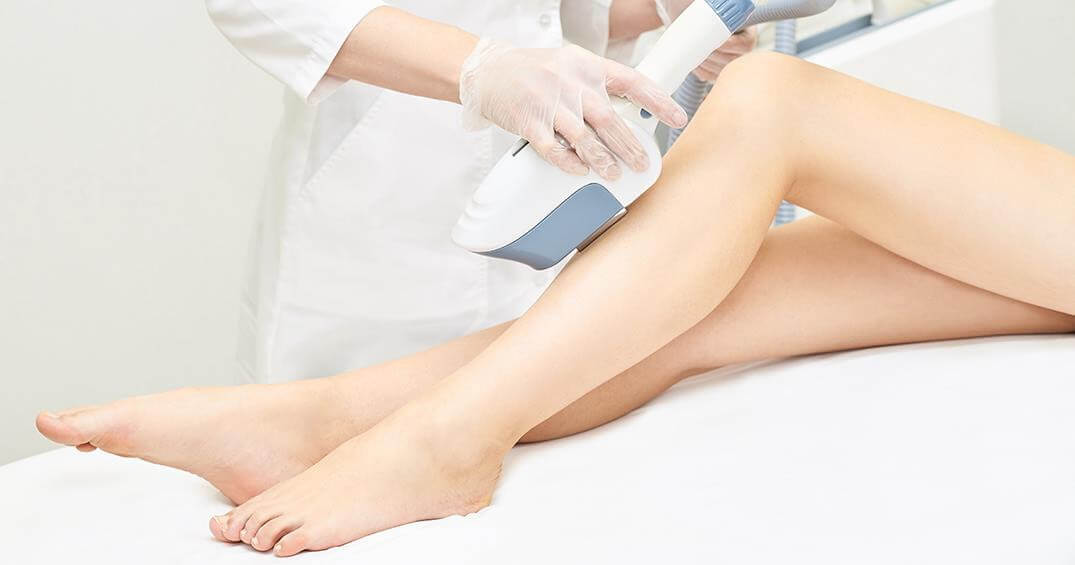
Although hair is present in the male body even in childhood, the hair becomes thicker during puberty. Also, facial hair growth or beard formation in men starts as they step foot into adulthood.
A full beard is a sign of manliness for some men while others want to keep it in check by grooming it regularly. Moreover, the pattern of hair growth is not the same in all men. This is determined by several factors which we will look into today.
Also, some have too much hair on their body male with growth all over their body surface which might be a form of hypertrichosis. So, we will know about the causes of excessive body hair growth in males as well.
Lastly, let us see how men can remove or groom the hair on their body and way.
What Are the Dynamics of Hair Growth Patterns in Men?
 Before the start of puberty, the hair growth on the bodies of males and females is almost alike. Both have short, thin, and peach-fuzz-like hair. However, as they enter puberty, the pattern of hair growth varies greatly among both genders because of the presence of a greater amount of testosterone in men and estrogen in women.
Before the start of puberty, the hair growth on the bodies of males and females is almost alike. Both have short, thin, and peach-fuzz-like hair. However, as they enter puberty, the pattern of hair growth varies greatly among both genders because of the presence of a greater amount of testosterone in men and estrogen in women.
Consequently, men begin to develop thick facial hair and dark body hair as well. However, the hair growth in these areas of the women is not well-marked. The beard and body hair are considered secondary sexual characteristics in men.
So, they start to appear at the age of 13 to 15 when the testosterone level is increased and it keeps on increasing even after 20s. Moreover, the pattern of hair growth varies among men as well. This could be because of genetics, ethnicity, hormones, and environmental factors.
What is the Difference Between Hirsutism and Hypertrichosis?
Hirsutism is the growth of unwanted hair in females with a pattern resembling that of males. Here, excess hair grows around the chin, sideburns, upper lips, chest, abdomen, back, and thighs.
This is particularly limited to females as it is caused by an excess of male hormones in them. It can also be associated with other signs and symptoms of testosterone access.
In contrast, hypertrichosis is excess hair growth in almost any area of the body which might be limited to a few parts or full body and face. It can occur in both genders equally and is regarded as “werewolf syndrome” because a full body excess hair growth makes one look just like a beast.
But the good thing is, it is extremely rare with only a few cases present worldwide. Furthermore, you can check the differences between both hypertrichosis and hirsutism .
The 11 Reasons for Excessive Hair Growth on Male Body
Now let us see what caused unwanted hair growth in men. There are 11 reasons for excessive hair growth in men including both the common and uncommon etiologies.
1. Hormonal Imbalance
 The most important factor determining hair growth in men is hormones. A balanced level of testosterone and estrogen regulates hair growth.
The most important factor determining hair growth in men is hormones. A balanced level of testosterone and estrogen regulates hair growth.
However, an excess of testosterone with no estrogen to balance leads to the development of too much hair on the body male. A study shows the effect of androgens on male hair growth [1].
2. Genetics
Genetics can also cause excess hair growth in men just like genetics cause alopecia. In most cases, the hirsutism-causing genes are transferred from the maternal side.
In other cases, there could be a mutation in the gene that stops hair growth after a particular point. Consequently, hair continues growing without any stopping signals.
3. Ethnicity
Ethnicity affects the lifestyle, eating habits, and even some diseases in the population. Also, genetics is closely associated with the people of a particular area or ethnicity.
So, men in South Asian, Mediterranean, and Middle Eastern countries have excessive hair growth as compared to men in other parts of the world.
4. Medications
 Medications can be a common cause of acquired excessive body hair growth in males. Medicines like minoxidil, steroids, cyclosporins, and prostaglandin analogs can cause hypertrichosis as a side effect.
Medications can be a common cause of acquired excessive body hair growth in males. Medicines like minoxidil, steroids, cyclosporins, and prostaglandin analogs can cause hypertrichosis as a side effect.
Such excess hair growth can be simply treated by restricting such medications. The effect of minoxidil on hair growth has been explained in a clinical study [2].
5. Hypervascularity
Hypervascularity means an increase in the volume and quantity of the vessels. It also means increased blood supply through the body tissues. It is prominent in the skin and hair follicles when there is hypervascularity in subcutaneous vessels.
This can cause hypertrichosis in a particular area with prominent vessels by increasing the supply of nutrition to the hair follicles in that area.
6. Endocrine Disorders
Several endocrine disorders can cause excessive body hair growth in males. For example, acromegaly is caused by overproduction of growth hormones. These growth hormones also attach to the receptors on hair-generating cells leading to the stimulation of hair growth.
A study has been carried out to check the association between GH and hair follicles [3]. Another cause of excess hair growth on the body is congenital hypothyroidism as explained in a scientific article [4].
7. Improper Plaster Application
 Chronic friction over an area can also lead to increased vascularity and the skin respond by giving way to the formation of excess and unwanted hair on the surface of the body.
Chronic friction over an area can also lead to increased vascularity and the skin respond by giving way to the formation of excess and unwanted hair on the surface of the body.
In such cases, only the section with plaster applied has excess hair growth as determined in research [5]
8. Cancer
Tumors like paraneoplastic syndrome which involves the kidneys, lungs, liver, and other organs can stimulate hormone production which plays a role in the regulation of body hair growth.
Similarly, tumors of the adrenal glands and pituitary gland also generate excess hormonal signals which leads to too much hair on the body male.
9. Porphyria Cutanea Tarda
 Porphyria Cutanea Tarda is the deficiency of enzymes involved in the synthesis of heme. This disease causes skin manifestations like photosensitivity.
Porphyria Cutanea Tarda is the deficiency of enzymes involved in the synthesis of heme. This disease causes skin manifestations like photosensitivity.
Moreover, it can result in hypertrichosis in the areas exposed to sunlight. The relation between PTC and excessive hair growth has been determined in a case study [6].
10. Systemic Disorders
Systemic disorders like POEMS syndrome and Cushing’s disorder can also be the cause of excessive body hair growth in males. These disorders are related to endocrine abnormalities.
11. Skin Disorders
Skin disorders including some infections like lichen simplex and autoimmune diseases like dermatomyositis can cause skin irritation and consequently excessive hair growth. This type of hypertrichosis is often patchy.
12. Diet and Malnutrition
 Malnutrition and eating disorders can result in extremely reduced body weight. It means there is no layer of fat under the skin for insulation.
Malnutrition and eating disorders can result in extremely reduced body weight. It means there is no layer of fat under the skin for insulation.
So, the body begins to increase hair growth as a form of defense mechanism as this hair can make a layer of insulation on the surface of the skin.
How to Deal with Excess Body Hair Growth in Males
 1. Shaving
1. Shaving
The first thing men resort to dealing with too much hair growth on the body is shaving. It is because shaving is nearly painless, effortless, and almost expense-less as well. Shaving also allows men to trim hair at a particular length and set their beard or body hair as they want.
2. Waxing
The second method is for men who cannot deal with shaving every day because of the shortage of time and they would rather be hairless than look at the unwanted hair every day with shaving. It can be painful. However, an oral analgesic can help you deal with the pain.
3. Epilation
 The next thing is epilation which is the use of an electric machine that grips and removes unwanted hair from the roots. It works just like waxing but is mess-free because there is no need to prepare the wax, waxing sticks, and strips. Also, the level of pain in both is comparable.
The next thing is epilation which is the use of an electric machine that grips and removes unwanted hair from the roots. It works just like waxing but is mess-free because there is no need to prepare the wax, waxing sticks, and strips. Also, the level of pain in both is comparable.
4. Hair Removal Creams
Hair removal cream specifically designed for thick hair in men is a nearly painless alternative to waxing and epilation. Moreover, its results last longer than that of shaving.
So, they can be used to remove unwanted excessive body hair in men within a few minutes. You can check out the Best hair removal creams for men here.
5. IPL Hair Removal
 If you would rather have unwanted hair treated long-lastingly than have to go for different methods now and then, IPL hair removal is for you.
If you would rather have unwanted hair treated long-lastingly than have to go for different methods now and then, IPL hair removal is for you.
Devices like Ulike Air3 IPL hair removal devices can be nearly painless, long-lasting, cost-effective, super fast, and skin-friendly. Additionally, it comes with multiple intensity levels and high energy output to work on stubborn hair in men.
6. Laser
Laser hair removal is yet another popular method of hair removal that provides semi-long-lasting results. The treatment can be time-taking but its result also lasts for a longer time. Moreover, laser hair removal is precise allowing you to have the unwanted hair removed in a definite pattern.
7. Electrolysis
 Lastly, we have electrolysis for you. This method uses electric current to kill hair follicles and make them unable to regenerate ever again.
Lastly, we have electrolysis for you. This method uses electric current to kill hair follicles and make them unable to regenerate ever again.
So, electrolysis can serve as an effective method of excess hair removal in men regardless of the cause. Also, it works for all skin tones, types, and all hair colors.
The Final Verdict
The body and facial hair growth in men is mainly controlled by hormones and genetics. However, factors such as malnutrition, drugs, endocrine syndromes, skin diseases, and systemic disorders can cause excessive body and facial hair growth in males.
This condition is also called hypertrichosis. Furthermore, you can find information about it in the werewolf syndrome .






















